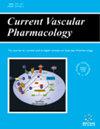Cellular and Molecular Mechanisms of Neuronal Degeneration in Early-Stage Diabetic Retinopathy
IF 2.8
3区 医学
Q2 PERIPHERAL VASCULAR DISEASE
引用次数: 0
Abstract
Background: Studies on the early retinal changes in Diabetic Retinopathy (DR) have demonstrated that neurodegeneration precedes vascular abnormalities like microaneurysms or intraretinal hemorrhages. Therefore, there is a growing field of study to analyze the cellular and molecular pathways involved to allow for the development of novel therapeutics to prevent the onset or delay the progression of DR. Molecular Mechanisms: Oxidative stress and mitochondrial dysfunction contribute to neurodegeneration through pathways involving polyol, hexosamine, advanced glycation end products, and protein kinase C. Potential interventions targeting these pathways include aldose reductase inhibitors and protein kinase C inhibitors. Neurotrophic factor imbalances, notably brain-derived neurotrophic factor and nerve growth factor, also play a role in early neurodegeneration, and supplementation of these neurotrophic factors show promise in mitigating neurodegeneration. Cellular Mechanisms: Major cellular mechanisms of neurodegeneration include caspase-mediated apoptosis, glial cell reactivity, and glutamate excitotoxicity. Therefore, inhibitors of these pathways are potential therapeutic avenues. Vascular Component: The nitric oxide pathway, critical for neurovascular coupling, is disrupted in DR due to increased reactive oxygen species. Vascular Endothelial Growth Factor (VEGF), a long-known angiogenic factor, has demonstrated both damaging and neuroprotective effects, prompting a careful consideration of long-term anti-VEGF therapy. Conclusion: Current DR treatments primarily address vascular symptoms but fall short of preventing or halting the disease. Insights into the mechanisms of retinal neurodegeneration in the setting of diabetes mellitus not only enhance our understanding of DR but also pave the way for future therapeutic interventions aimed at preventing disease progression and preserving vision.早期糖尿病视网膜病变中神经元退化的细胞和分子机制
背景:对糖尿病视网膜病变(DR)早期视网膜变化的研究表明,神经变性先于微动脉瘤或视网膜内出血等血管异常。因此,分析相关细胞和分子通路的研究领域不断扩大,以便开发新型疗法,预防糖尿病视网膜病变的发生或延缓其进展。分子机制:氧化应激和线粒体功能障碍通过涉及多元醇、己胺、高级糖化终产物和蛋白激酶 C 的途径导致神经退行性变。神经营养因子失衡,特别是脑源性神经营养因子和神经生长因子,也在早期神经退行性变中发挥作用,补充这些神经营养因子有望缓解神经退行性变。细胞机制:神经退行性变的主要细胞机制包括由 Caspase 介导的细胞凋亡、神经胶质细胞反应和谷氨酸兴奋毒性。因此,这些途径的抑制剂是潜在的治疗途径。血管成分:一氧化氮途径对神经-血管耦合至关重要,在 DR 中由于活性氧增加而受到破坏。血管内皮生长因子(VEGF)是一种久负盛名的血管生成因子,它同时具有损伤和保护神经的作用,因此需要慎重考虑长期抗血管内皮生长因子疗法。结论目前的 DR 治疗主要针对血管症状,但无法预防或阻止疾病的发生。洞察糖尿病背景下视网膜神经变性的机制不仅能加深我们对 DR 的理解,还能为未来旨在预防疾病进展和保护视力的治疗干预铺平道路。
本文章由计算机程序翻译,如有差异,请以英文原文为准。
求助全文
约1分钟内获得全文
求助全文
来源期刊

Current vascular pharmacology
医学-外周血管病
CiteScore
9.20
自引率
4.40%
发文量
54
审稿时长
6-12 weeks
期刊介绍:
Current Vascular Pharmacology publishes clinical and research-based reviews/mini-reviews, original research articles, letters, debates, drug clinical trial studies and guest edited issues to update all those concerned with the treatment of vascular disease, bridging the gap between clinical practice and ongoing research.
Vascular disease is the commonest cause of death in Westernized countries and its incidence is on the increase in developing countries. It follows that considerable research is directed at establishing effective treatment for acute vascular events. Long-term treatment has also received considerable attention (e.g. for symptomatic relief). Furthermore, effective prevention, whether primary or secondary, is backed by the findings of several landmark trials. Vascular disease is a complex field with primary care physicians and nurse practitioners as well as several specialties involved. The latter include cardiology, vascular and cardio thoracic surgery, general medicine, radiology, clinical pharmacology and neurology (stroke units).
 求助内容:
求助内容: 应助结果提醒方式:
应助结果提醒方式:


